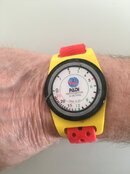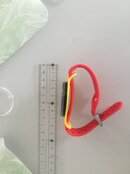For rec diving I’m pretty happy trusting my compy for depth and pressure both. If the sensors are slightly off it will be covered by the fairly conservative safety margin. If it’s way off I’ll know. If it fails entirely I’ll just come up slow, that’s always an option with the diving I do. If I needed to confirm it I’d use a long tape measure or a point of known depth somewhere. If it needed to be recalibrated or something I think the shop would do that in a transparent pressure vessel, not my problem either way.
It’s a nifty invention with the multiple labyrinth tubes packed in to give a mostly linear scale, don’t see much application though. Sort of like designing an improved bend-o-matic analog computer: sure it would be cool but why?
It’s a nifty invention with the multiple labyrinth tubes packed in to give a mostly linear scale, don’t see much application though. Sort of like designing an improved bend-o-matic analog computer: sure it would be cool but why?





